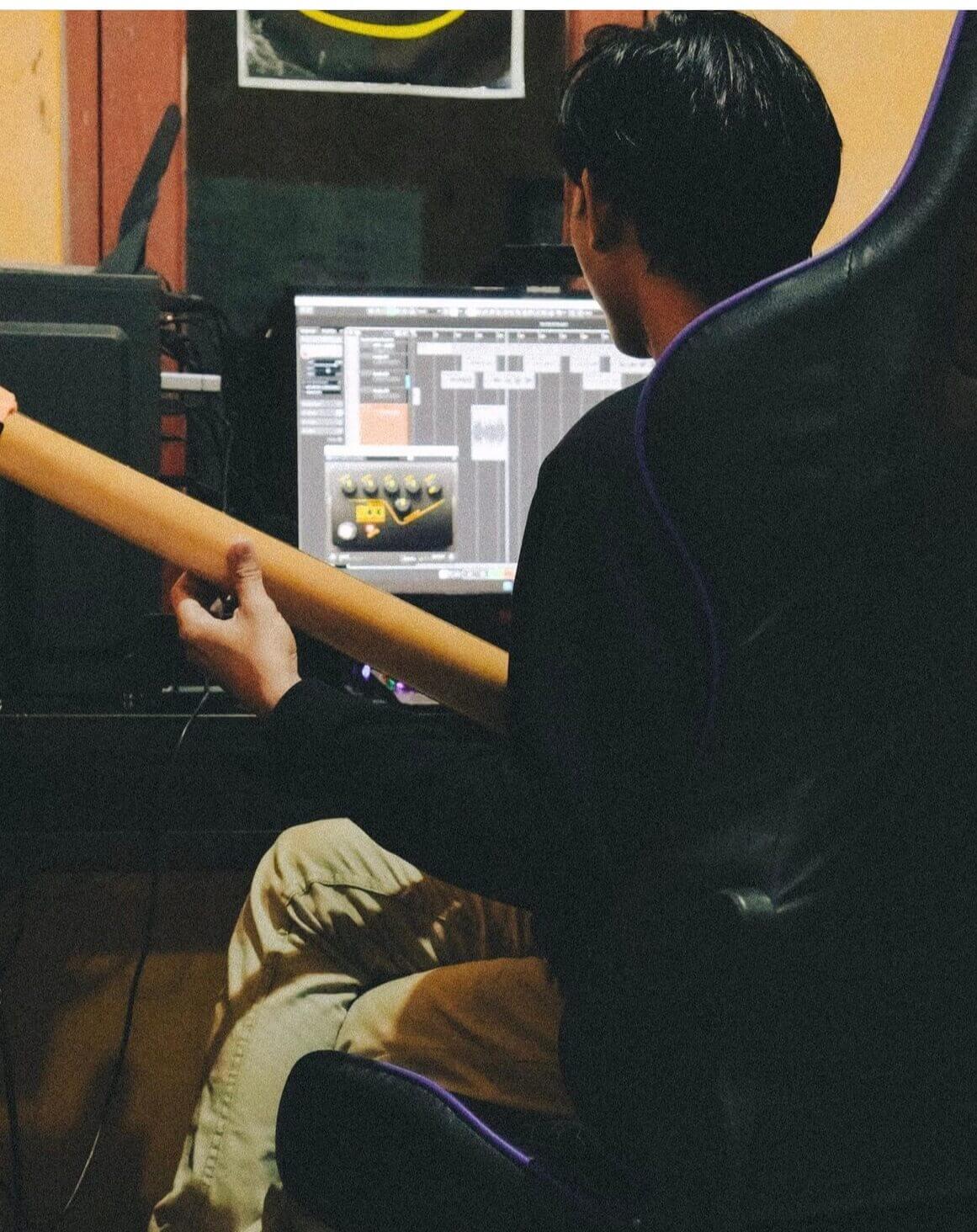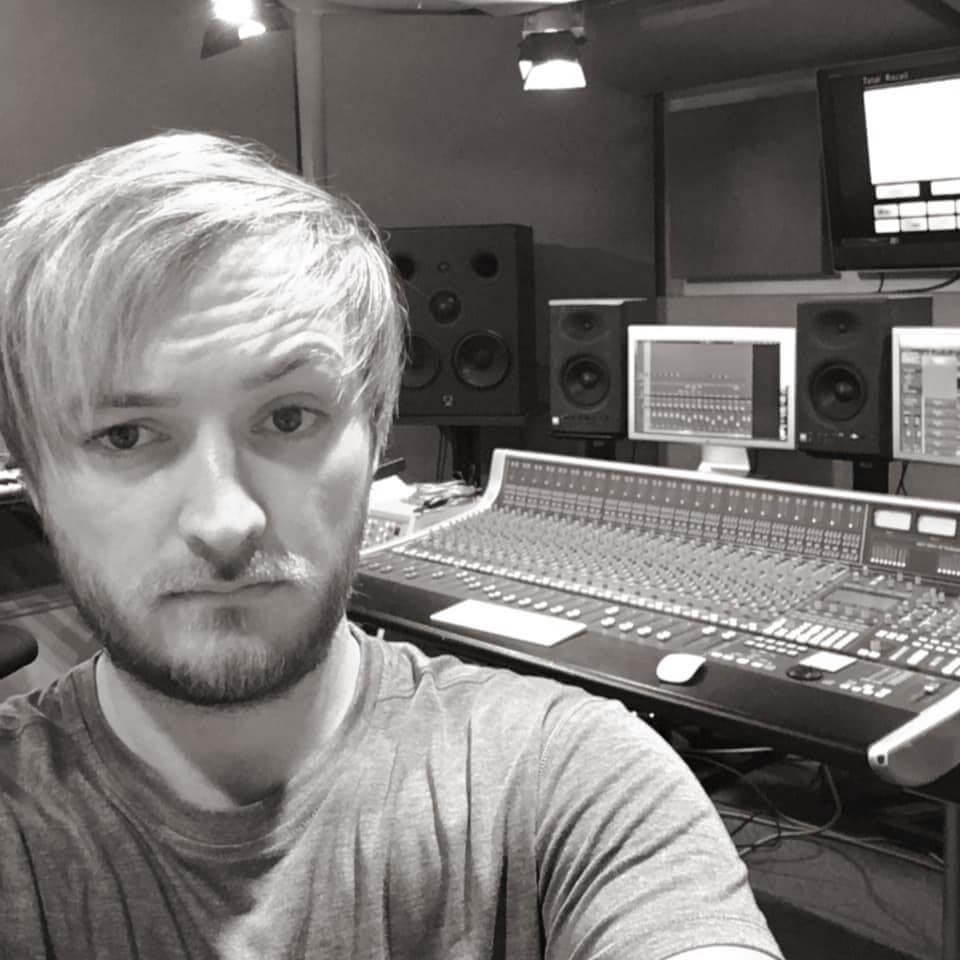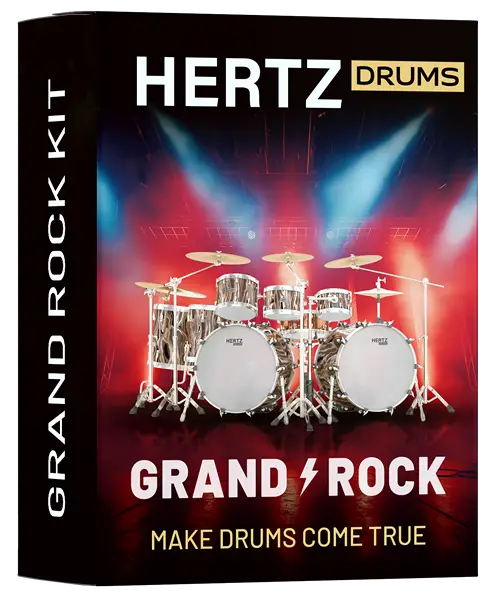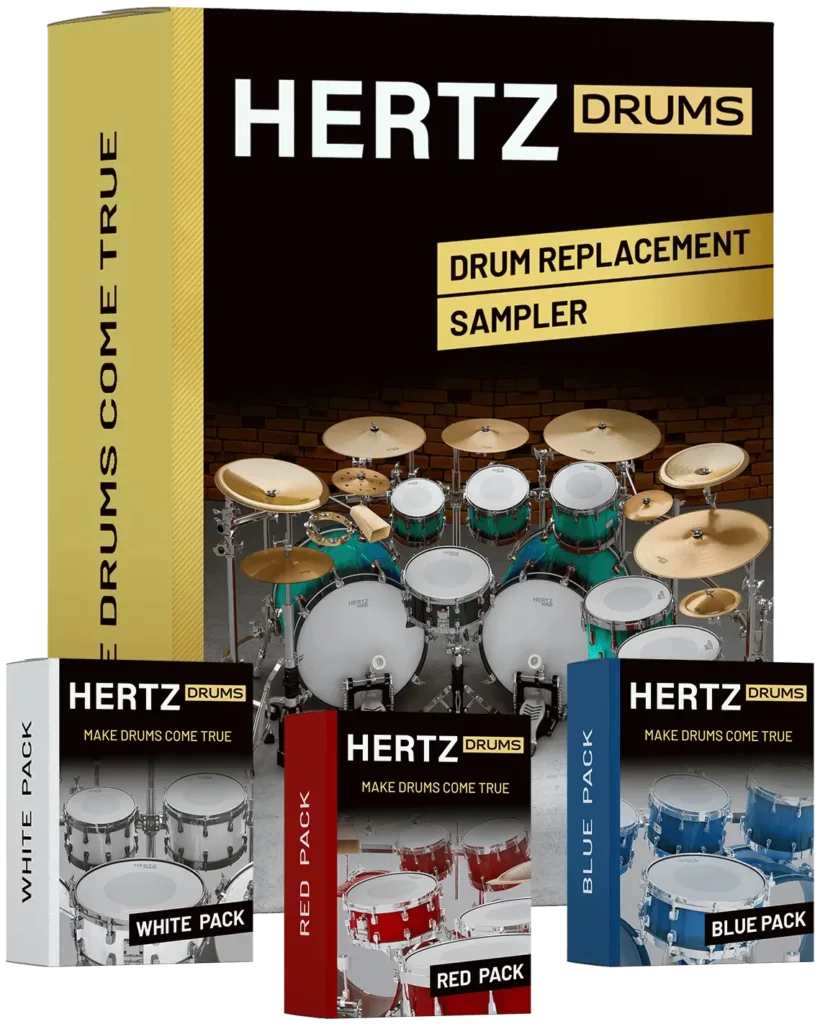Rock Band Drum Kits
The Hertz Drums Grand Rock Expansion Pack draws inspiration from the golden era of alternative rock music, influenced by legends of the scene such as Foo Fighters, Red Hot Chili Peppers, Rage Against the Machine, Nirvana, AC/DC, Toto, Rolling Stones, and many others.
FAQ
A simple guide to mic a rock drum kit for a rock band:
- Bass Drum (Kick):
- Place a microphone inside the bass drum, near the pedal beater.
- Point it towards the center of the drumhead to capture the punchy low-end.
- Snare Drum:
- Position a microphone above the snare drum, pointing down towards the center.
- Aim to catch the crisp snare sound when the drum is hit.
- Toms:
- Use a microphone for each tom drum.
- Place them a few inches above each drumhead, angled towards the center.
- Capture the full sound of each tom hit.
- Overhead Microphones:
- Hang two microphones above the drum kit, facing downwards.
- Position them evenly to capture the overall sound of the drums and cymbals.
- Cymbals:
- Overheads will pick up cymbals, but you can add spot microphones for more control.
- Place them close to each cymbal, pointing towards the bell or edge.
- Test and Adjust:
- Soundcheck the drums and adjust microphone positions as needed.
- Listen for a balanced sound between drums and cymbals.
Please check our video 6 Things You Must Do Before Drum Recoding
https://www.youtube.com/watch?v=wwt_QACeqZ0&t=1s
That’s it! Keep it simple and focus on capturing the energy and dynamics of the drummer and the kit.
You can follow the steps mentioned in the first point to achieve the best rock drum kit sound! Please just have in mind to consider the venue acoustics, stage layout when setting up the microphones for live sound reinforcement of a rock drum kit. In live scenarios, it is common to use Drum Samples. Our stand alone version of HERTZ DRUMS can help you with that!
To achieve exceptional sound quality, it’s imperative to start with a strong foundation. This includes having quality sources such as new skins, tuned drums, good sounding room and a skilled drummer.
Consistently reference your desired sound against a track you admire!
You can find how to recreate some famous track on our Youtube channel such as How to re-create the iconic snare tone from Nirvana’s ‘Smells Like Teen Spirit’
https://youtu.be/7qEVyPMQY-U?si=aQmPoB7CL5q7V4zX
Here’s a comprehensive guide:
Below you will find a general guide
- Balance the Levels:
- Adjust the volume of each drum and cymbal to create a balanced sound.
- EQ
- Use EQ to enhance the kick drum’s low end and the snare’s midrange.
- Cut unwanted frequencies to clean up the sound.
- Compression:
- Apply compression to control the drum dynamics and add punch.
- Adjust settings for kick and snare to make them stand out.
- Reverb and Ambience:
- Add a touch of reverb or room ambience to create depth.
- Sample Enhancement:
- Layer samples with the original drums to add depth and punch.
- Choose samples that complement the existing drum sound you can use Hertz Drums – Grand Rock Pack to get the best rock drum kit samples
- Group Processing:
- Group similar drum tracks and apply processing to the entire group.
- Use compression to glue the drums together for cohesion.
- Final Touches:
- Listen carefully and make adjustments as needed
- .
By following these steps, you can achieve a solid rock drum mix that sounds full and powerful. This is just a suggestion! Please always trust your ears!
Creating a rock band drum set involves assembling various drums and cymbals to provide a versatile and dynamic percussion setup suitable for playing rock music.
Bass Drum (Kick):
Start with a bass drum, which typically sits on the floor and is played with a foot pedal.
Choose a bass drum size that suits your preference and playing style, usually ranging from 20 to 24 inches in diameter.
Snare Drum:
Include a snare drum, which provides the sharp, crisp sound often heard in rock music.
Opt for a snare drum size between 13 and 14 inches in diameter for a standard rock sound.
Toms:
Add tom drums to your setup for fills and accents.
Common configurations include two rack toms (smaller drums mounted above the bass drum) and one floor tom (larger drum placed on the ground).
Cymbals:
Include a variety of cymbals to add texture and dynamics to your drumming.
Essential cymbals for a rock drum set include:
- Hi-hats: Two cymbals mounted on a stand and played with a foot pedal for rhythmic accents.
- Crash cymbals: Used for loud, explosive accents and fills.
- Ride cymbal: Provides a steady, rhythmic pattern and can be used for bell accents.
- Optional: Splash cymbal, China cymbal, and effects cymbals for additional sonic options.
Hardware:
Invest in sturdy hardware to mount and support your drums and cymbals.
This includes cymbal stands, tom mounts, snare stands, bass drum pedal, and a drum throne (seat).
You can also try to create an E-drum set!
Remember that recording the drums is a very demanding process, Try out Hertz Drums and save time and money!!
Yes! You can! Check our video on how to fix cheap drum sound:
https://www.youtube.com/watch?v=Mg6m_btaKo8&t=12s
Related Videos
We are making our clients happy














